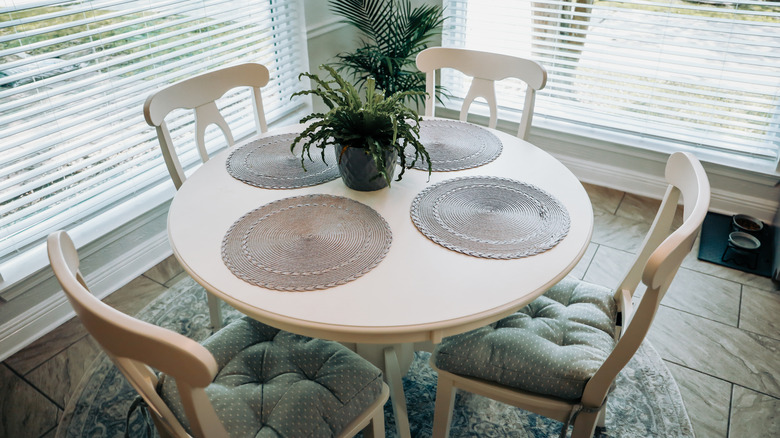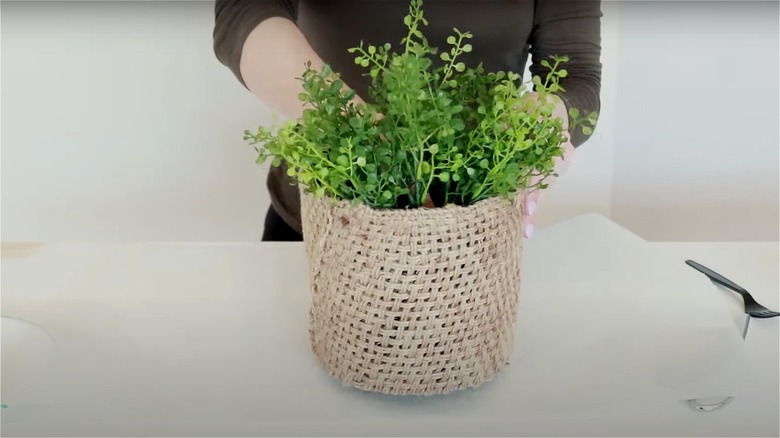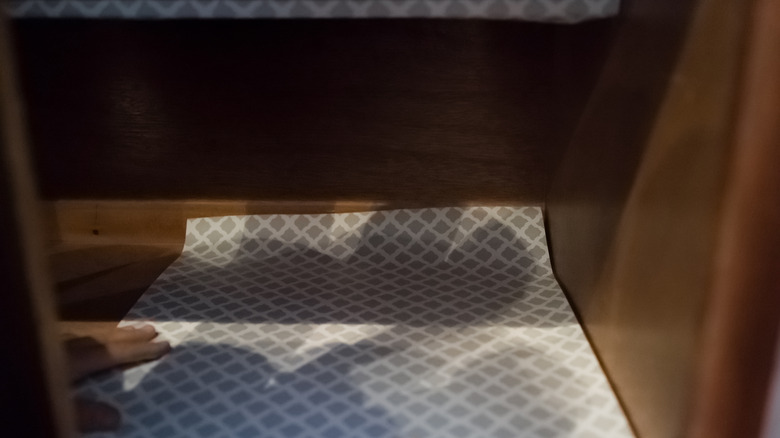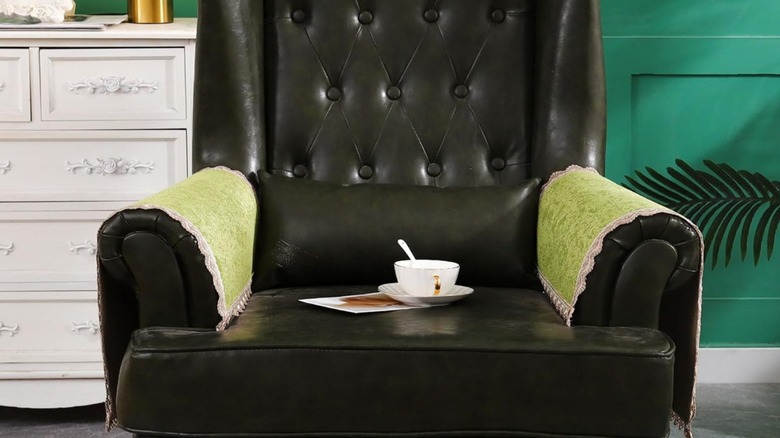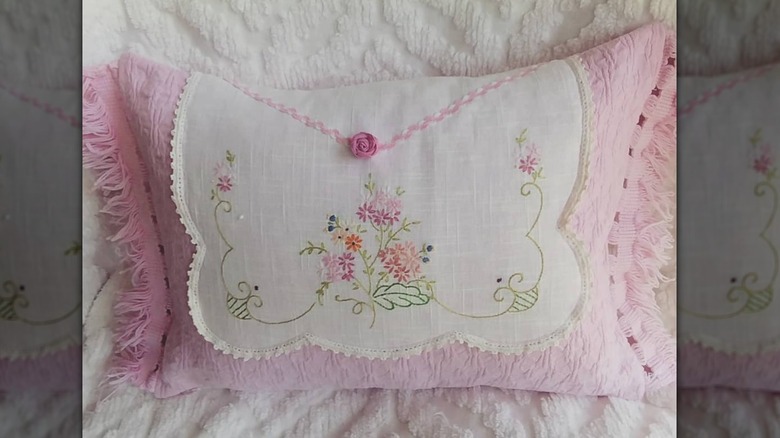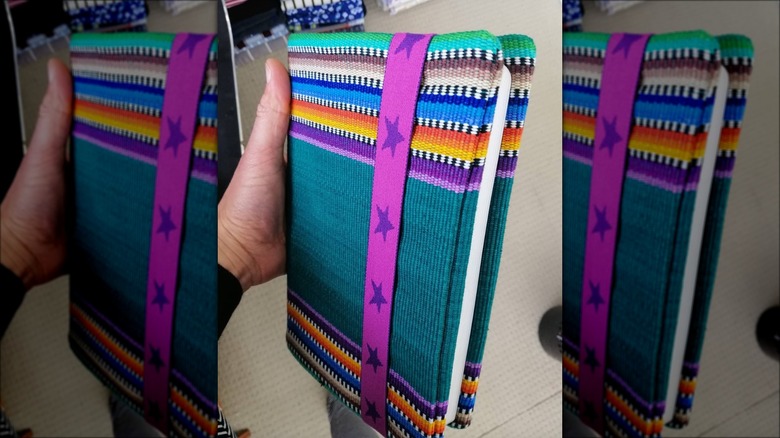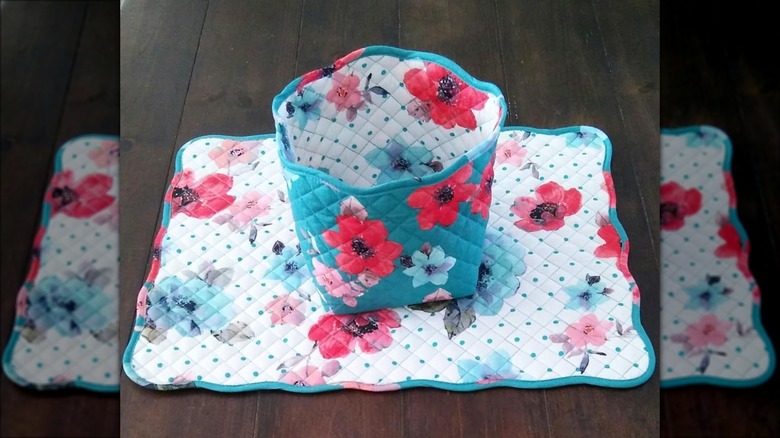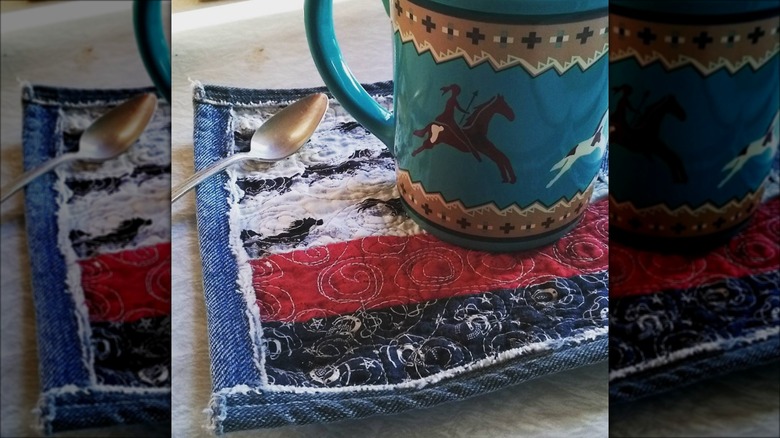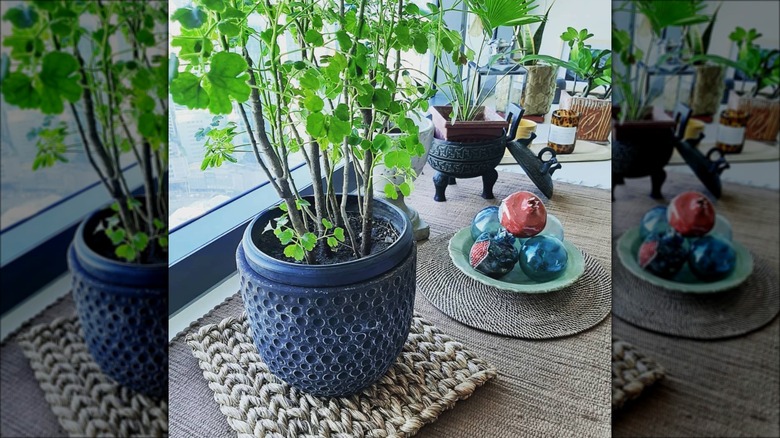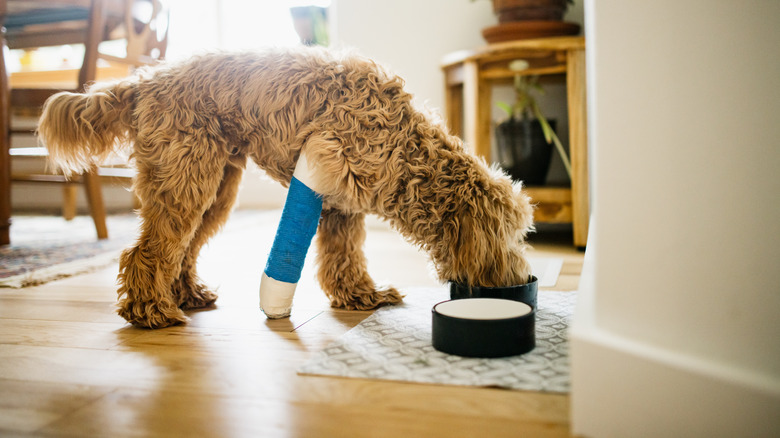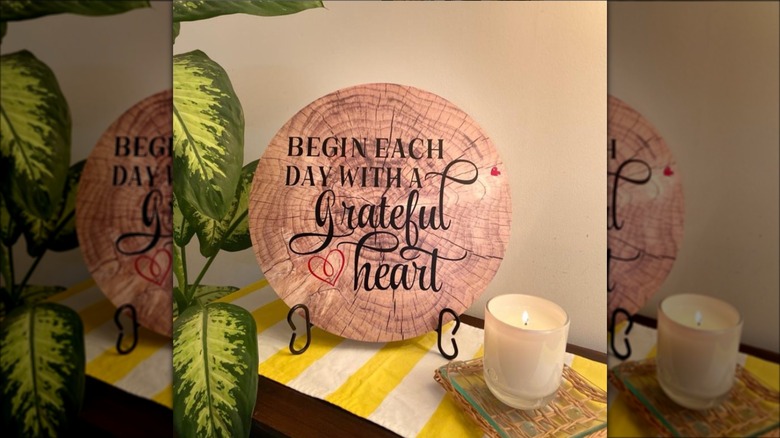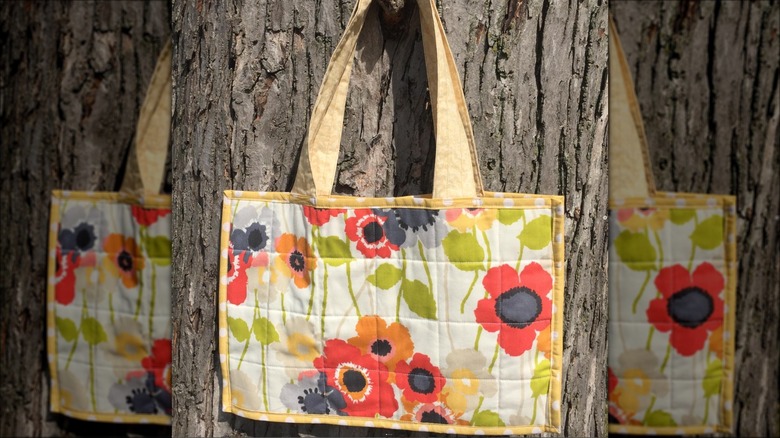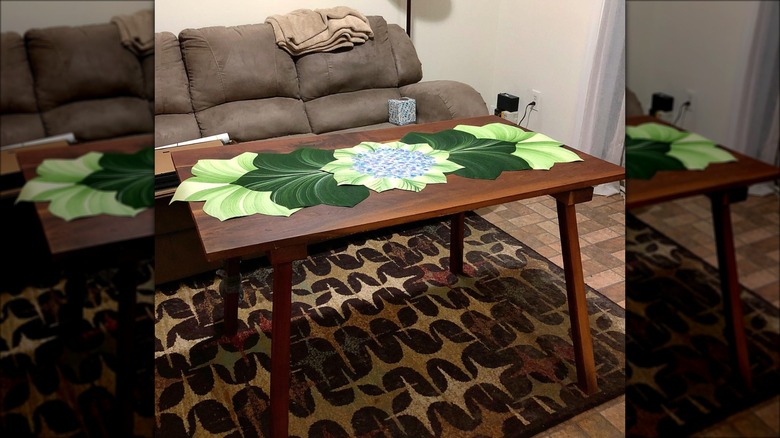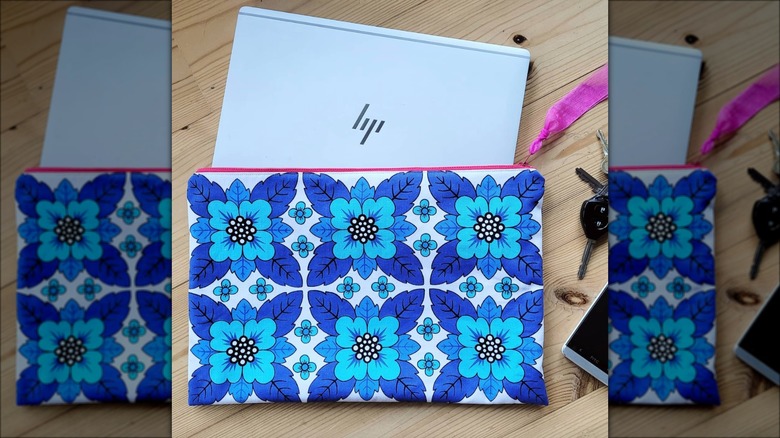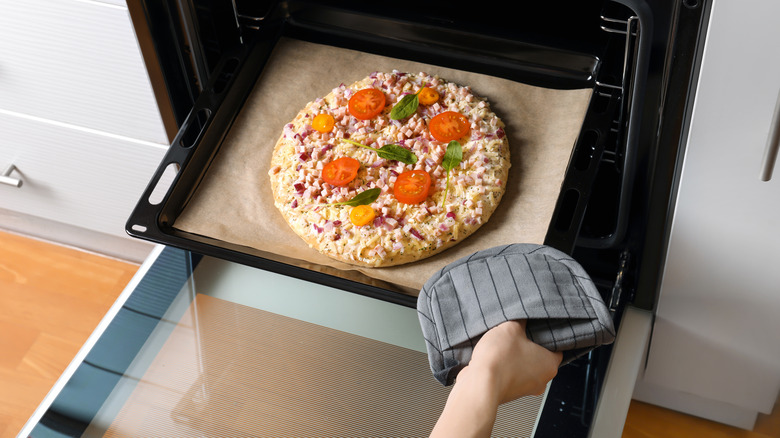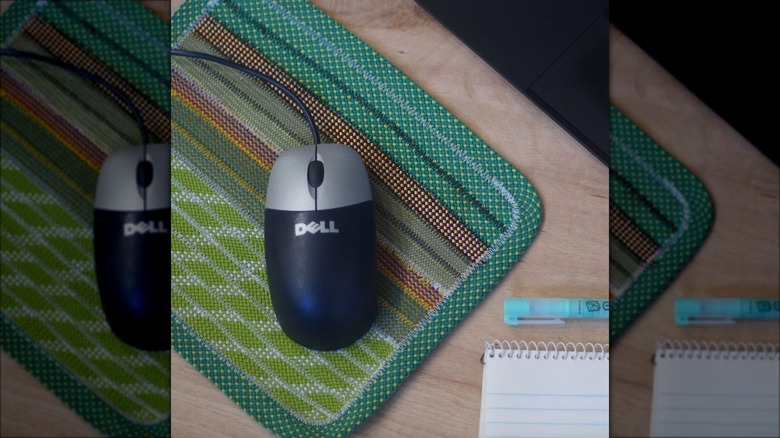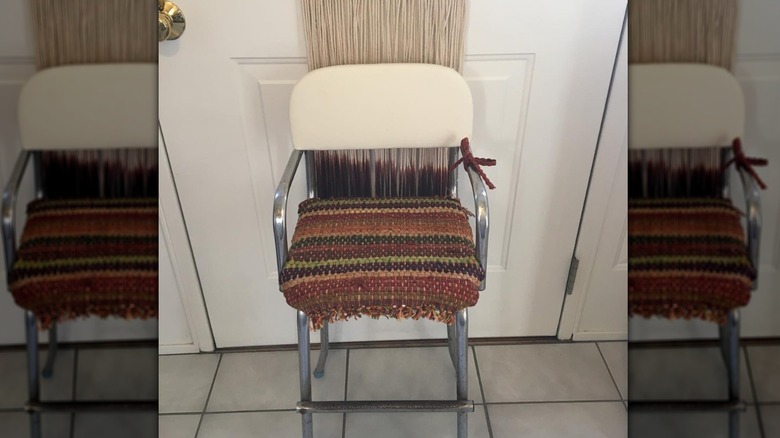16 Clever Ways To Repurpose Old Placemats Around The House
Whether you're decorating a dining table for a special occasion or simply looking for ways to protect your furniture from drips and spills, placemats are a necessity. While they're simple in design, these small pieces of material can visually mark off place settings, make cleanup easier after a meal, and bring some much-needed interest to an otherwise-simple tablescape. With that being said, however, it's likely that you have more placemats on hand than you need for daily use. Placemats that you use for special events and holidays have a high chance of sitting around and collecting dust, especially if you have a specific set that you prefer because they're more durable or easy to clean.
According to a survey from Budget Dumpster, only 5.1% of Americans said that it's unlikely that they'll take on a decluttering project in the next six months. If you fall into the vast majority of people, there's no better place to start your decluttering mission than with these non-essential items. Rather than just trashing them, however, consider repurposing your old placemats around your home. By taking this approach, you'll be able to free up storage space and create a new everyday essential, all while spending nothing or next to nothing on materials. While it might seem like placemats don't have a ton of other uses, their simple design and durability mean they can find plenty of alternative purposes in your space, and they're also a fantastic base for many DIY projects.
1. Conceal ugly plant pots
Plant pots obviously serve an important role in making sure your houseplants stay healthy. Unfortunately, however, a lot of the more fashionable options on the market are either shockingly expensive or don't have the proper holes for drainage. If you've gone the more utilitarian route to prioritize your plant's health, there's any easy way to hide a not-so-adorable plant pot with just a placemat. Simply wrap your placemat around the pot to measure how much material you'll need, then trim it and attach the ends to one another to create a fashionable cover in just a few minutes.
2. Line kitchen cabinets
Putting down a protective layer in your kitchen cabinets and drawers certainly isn't a new idea, but store-bought rolls of lining material can come with some unexpected usage issues. Most of the time, you have to go through the hassle of cutting down the material to your desired size, deal with annoying adhesive when you want to remove the protective layer, and even contend with a frustrating texture that makes it more difficult to wipe away crumbs and debris. By using vinyl placemats to line your kitchen cabinets instead, you'll have an easy-to-remove and clean protective layer that's already cut down to a manageable size.
3. Protect the arms of your furniture
The arms of our furniture get a lot of use throughout the day, and tiny stains and scratches can quickly add up to make them look less-than-stellar in comparison to the rest of the chair or sofa. To help give them an added layer of protection — or cover up existing stains or damage from pets that you can't repair — consider using two flexible placemats as covers. The thick fabric items will keep the surface underneath stain and damage-free, and they can easily be removed and tossed in the washing machine if you do end up facing off against spills.
4. Create a decorative pillowcase
Decorative placemats might be a fun tablescape inclusion for special events, but they're not all that practical for everyday use. However, if you find that you love the pattern and still want to incorporate it into your décor, consider turning it into a throw pillow. Placemats typically already have finished edges, so you can easily fold one in half to make a small pillow or sew two placemats back to back to create something larger. Stuff your casing with polyfill or fabric scraps before closing off the last side to make the perfect pillow to complement your bedding or seating area.
5. Make a fabric book cover
Covers might not be an essential for every book in your collection, but if you have a favorite novel, text, or journal that you frequently travel with, they can help protect the exterior and make sure you're not left with damaged corners or scratches. Thin fabric can certainly do the job for this project, but if you want something that's going to provide more cushion, consider making your book covers out of the thicker material of placemats. One placemat should give you enough material to cover the average book, so you can save yourself a trip to the fabric store without creating extra waste.
6. Form a storage basket
Baskets are one of the most stylish storage solutions out there, but if you want to bring even more flair to your space, consider making some out of your favorite patterned placemats. Thanks to the fact that placemats are usually made out of a stiffer material, they can become a fantastic base for a flexible fabric basket. Simply form the placemat into your desired shape to get a better idea of the pattern, cut down any excess material, and sew the seams. The resulting basket will be perfect for storing lots of items, from small accessories in your closet to toiletries in the bathroom.
7. Fashion coasters
There are plenty of different ways to DIY coasters to protect the wood furniture in your home, but this placemat hack has to be one of the simplest. Placemats are already made with protecting your dining table in mind, so they're well-suited for the job. Simply cut down your placemats to a more manageable size and you'll be left with a set of fabric coasters that are ready to use. If you like the frayed look, you can keep the fabric as-is, but it can also be a good idea to finish off the edges with a simple stitch to make sure they hold up over time.
8. Place underneath plants
Plant pots need to have proper drainage to prevent root rot, but those little holes can mean your floor or furniture piece is on the receiving end of frequent drips and puddles. This isn't much of a problem outdoors, but indoor plants can leave you with water damage, especially if you have wood or faux-wood items. To give your pieces a bit of a buffer, consider putting an old placemat under your houseplants. Fabric placemats will help to absorb small amounts of liquid, while vinyl placemats will act as a barrier until you have the chance to clean up the spill or until the water eventually evaporates.
9. Keep under your pet food bowls
Pets can be messy eaters, so adding a placemat under their bowls can help to keep them in place and prevent spills and kibble from ending up all over your floor. Just a regular fabric placemat will do the trick in most situations, but if you have a pet that tends to push their bowls around, you can also add a small rug pad or some grip tape under the mat to keep it in place. After it inevitably gets messy or wet, all you have to do is toss it in the washing machine for a refresh.
10. Craft a display piece
Decorative placemats come in no shortage of creative colors, patterns, and designs, so if you find one you really love, consider transforming it into a more permanent display piece. Wooden or plastic placemats can be spruced up with some vinyl cutouts and placed on a plate display if you're on the hunt for a customizable twist in your décor, but typical fabric placemats aren't the most well-suited for this job. Instead, place flimsier placemats in a frame to give them some structure, or simply pin them directly onto the wall like a tapestry to incorporate them into your home's design.
11. Sew a tote bag
Once you've learned the basic skills necessary for sewing, a tote bag is one of the simplest projects you can take on, and crafting one out of old placemats can make the whole process even easier. Simply sew two placemats together, then add on a strip of fabric or ribbon along the top to act like a handle. The general sturdiness and size of fabric placemats will ensure your bag holds up to wear and tear and can fit just about anything you want to carry with you, from books for class to your groceries for the week.
12. Use as a table runner
If you still want to bring some interest to your table but you're not a big fan of the typical placemat setup, consider turning them into a runner. To accomplish this, all you need to do is connect your placemats end to end until you reach about the same length as your table. This can work well with normal rectangular placemats, but uniquely-shaped types like flowers or circles can bring even more visual interest to your setup. Feel free to play around with layering and different orientations before you finalize your runner with stitches or fabric glue — there are plenty of different possibilities to explore.
13. Construct a laptop case
Your laptop is likely one of the most valuable things you travel with on a daily basis, so it can certainly benefit from a layer of added protection. If you're in need of a case and have some old placemats lying around, you're in luck. Placemats are the perfect size to create a case for the average laptop, and the thick fabric works well to help prevent scratches and protect against spills. Simply sew two placemats to each other, then add a zipper onto the open side to create a convenient, cute, and cost-efficient laptop carrying case.
14. Stitch together a potholder
Protection in the kitchen is an absolute necessity, but if you're feeling like your existing potholders are a little lackluster, consider making your own out of placemats. Fabric placemats are usually designed with some degree of heat resistance in mind, but if you don't think the fabric is thick enough to protect your hands from grabbing something out of the oven, you can add a layer of heat-resistant insulation or batting inside the piece. Just make sure your placemat material isn't prone to melting, as molten plastic threads are a recipe for burns.
15. Utilize as a mouse pad
While they're certainly less common nowadays as technology has become more advanced, mousepads are an essential accessory for many people with desktop computers. Basically, they help the user customize their level of friction, decrease the amount of wear, and help to reduce jitter compared to using the mouse directly on a desk. If you're on the hunt for a mousepad and don't like the options you're seeing, consider using a placemat. Smoother fabric and vinyl placemats can make for a perfect substitute and you can easily cut them down if you don't need as much surface area to move your cursor.
16. Put on a seat
Old placemats can be used as a base for plenty of different sewing projects, but one of the most functional is as a seat cover. If you have a smaller chair that's in need of some TLC, consider creating a placemat cover for the cushion. This layer will help conceal any existing damage, protect the seat from further blemishes, and bring a fun pop of color, texture, and pattern to the item. While placemats are likely too small to act as a seat cover for a large armchair, this is a great idea to keep in mind for dining room chairs, barstools, and play chairs.
